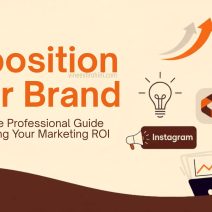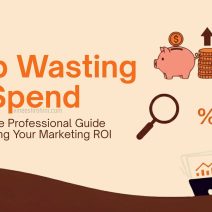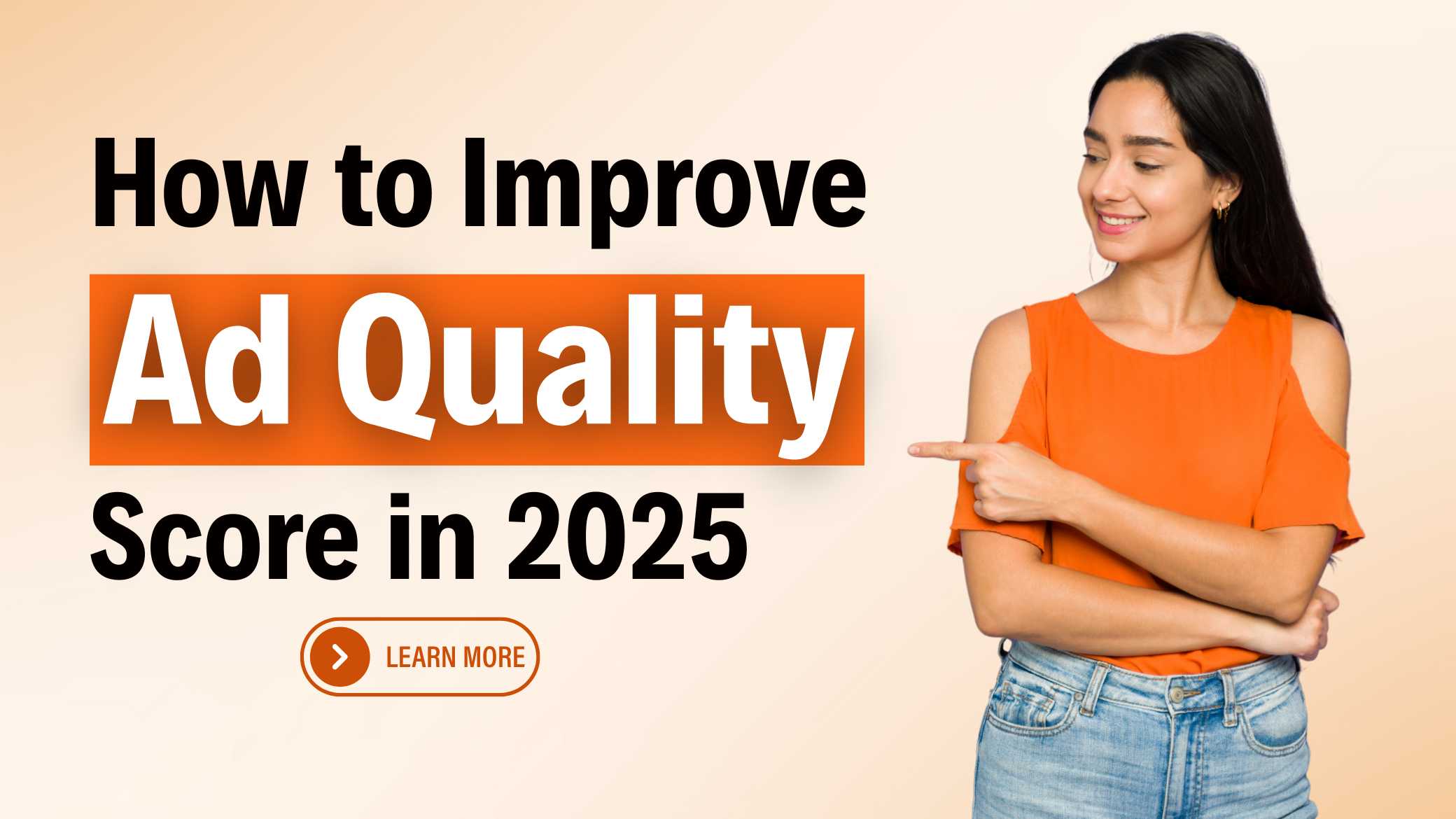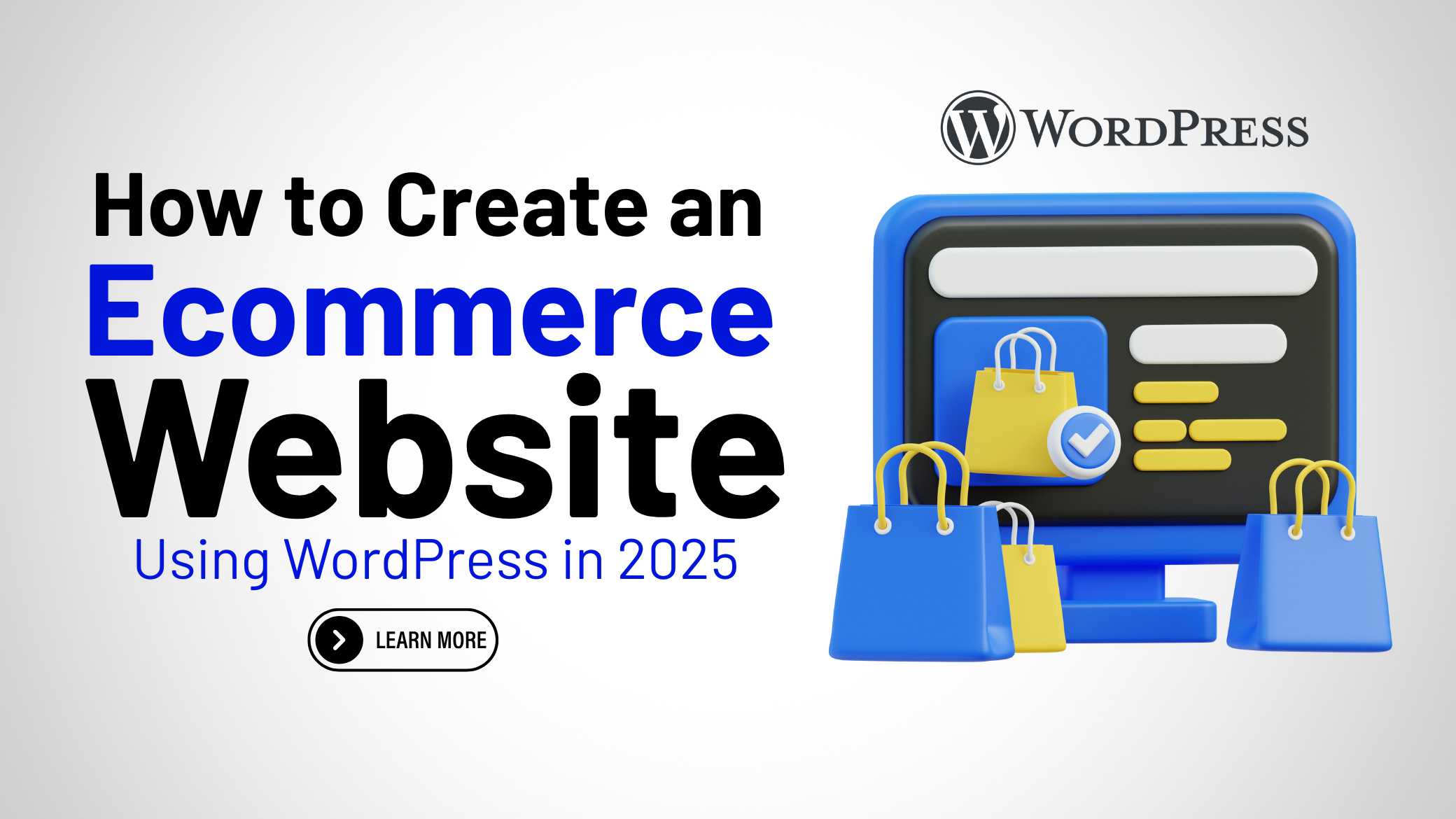Improve Ad Quality Score : The Google Ads Quality Score is a numeric value from 1 to 10 assigned to each keyword in your campaign, reflecting the relevance and effectiveness of your ads, keywords, and landing pages. In 2025, as Google continues to refine its ad-ranking algorithm using AI and machine learning, the importance of maintaining a high Quality Score has increased significantly. This score influences your ad rank and cost per click (CPC), directly impacting your ROI and visibility.
Table of Contents
A high Quality Score helps advertisers gain better ad placements at lower costs, while a low score results in higher bids and poor exposure. Google determines Quality Score based on three primary factors: expected click-through rate (CTR), ad relevance, and landing page experience. These components have evolved over the years, with newer algorithm updates placing a stronger emphasis on semantic relevance, mobile usability, and user experience signals.
Optimizing Expected Click-Through Rate (CTR)

Expected CTR measures the likelihood that a user will click on your ad when it is displayed. Improving CTR is vital for increasing your Quality Score in 2025. Start by writing more compelling ad copy that speaks directly to user intent. Use emotionally resonant language, urgency-driven phrases, and clear value propositions. For example, instead of simply writing “Buy Laptops Online,” use “Best-Selling Laptops Under ₹30,000 – Shop Today with Free Delivery!” Utilize Responsive Search Ads (RSAs) to automatically test multiple headline and description combinations, allowing Google’s AI to find the best-performing variations.
Also Read : Using AI for Market Research in 2025
Include high-performing keywords naturally in your headlines and use dynamic keyword insertion (DKI) carefully to match user queries. Enhance your ads with all available ad extensions—sitelinks, callouts, structured snippets, and price extensions—to increase visibility and encourage more clicks. Leveraging AI tools to analyze real-time performance and user behavior enables rapid optimization of ads based on live data, leading to significant CTR gains.
Increasing Ad Relevance Through Precision Targeting
Ad relevance evaluates how closely your ad matches the keywords and user intent behind the search query. In 2025, search engines analyze thematic relevance more deeply using natural language processing (NLP) rather than just matching keywords. To increase ad relevance, create tightly themed ad groups with limited keywords that closely align with your ad copy. For instance, if you’re promoting a “Keto Meal Plan Subscription,” don’t group it with unrelated keywords like “Healthy Breakfast Ideas” or “Low-Carb Desserts.” Each ad group should have a narrow focus with customized messaging tailored to the specific keyword set.
Avoid keyword stuffing and instead use natural, intent-based phrasing. Ensure your headlines and descriptions contain variations of the search intent. For example, keywords like “best budget smartphones” can be matched with headlines like “Affordable Smartphones Under ₹15,000 – Best Picks 2025.” Also, use audience segments, demographics, and location targeting to make your ads more relevant to each user group. The more precisely your ads align with what the user is looking for, the higher your relevance score will be.
Enhancing Landing Page Experience
Landing page experience is a critical determinant of your Quality Score in 2025. Google’s algorithm evaluates page speed, mobile usability, content relevance, layout, and overall user engagement. A slow or cluttered landing page results in higher bounce rates and lower scores. Optimize your page loading speed using modern tools like Google PageSpeed Insights and Core Web Vitals. Compress images, minimize CSS and JavaScript, and consider using AMP (Accelerated Mobile Pages) for faster mobile delivery. Your landing page content must mirror the ad copy. If your ad promises “50% Off on Designer Handbags,” the offer must be clearly visible on the page without unnecessary clicks or scrolls.
Avoid clickbait headlines and deliver on the user’s expectations immediately. Structure your content with clear headlines, bullet points, and compelling CTAs. Trust signals like customer reviews, secure payment badges, and clear contact information help improve credibility. Use heatmaps and session recordings to study user interaction and optimize for engagement and conversions. An effective landing page keeps users engaged longer and signals to Google that your page satisfies user needs.
Leveraging AI-Powered Personalization
Artificial intelligence is transforming how advertisers tailor and deliver their campaigns. In 2025, using AI-powered personalization tools within Google Ads is no longer optional—it’s a competitive necessity. Responsive Search Ads (RSAs) automatically mix and match headlines and descriptions to identify the best combinations for different audiences. Use Google’s Smart Bidding strategies such as Target CPA, Target ROAS, or Maximize Conversions, which rely on AI to bid effectively based on a user’s likelihood to convert. Integrate customer relationship management (CRM) tools and Google Ads to use first-party data, enabling highly personalized ads based on behavior, purchase history, and preferences.
Personalized ads not only improve CTR and conversion rates but also increase your Quality Score because they are more relevant to the user. Advanced targeting through Customer Match and Similar Audiences allows you to show tailored messages to specific segments, improving campaign efficiency and user engagement.
Using First-Party Data for Smart Retargeting
As third-party cookies are phased out, advertisers in 2025 must rely on first-party data for retargeting and audience building. Collect user data ethically through newsletter sign-ups, gated content, or loyalty programs. Use this data to create segmented remarketing lists and deliver customized ads to users who have already shown interest in your products or services. For instance, if a user visits your site and views a product without purchasing, retarget them with a personalized ad showing that exact product with a discount offer. This increases engagement and reinforces brand recall.
Integrate your website analytics with Google Ads to track user behavior, build intent-based audiences, and show ads based on actions like cart abandonment, time spent on site, or product category views. Highly personalized retargeting campaigns based on first-party data lead to better user experiences, improved CTRs, and a stronger Quality Score.
Creating Valuable and Optimized Content
Content is a driving force behind ad relevance and landing page quality. In 2025, Google’s algorithms give preference to content that offers genuine value to users. Invest in creating high-quality blog posts, product guides, explainer videos, and comparison tables that align with user search intent. Your landing page should educate, inform, or solve a problem—not just sell. Use SEO best practices on your landing pages: optimized meta tags, internal linking, relevant keywords, schema markup, and fast-loading multimedia content.
The synergy between content marketing and paid search not only improves your organic rankings but also enhances your ad’s performance by increasing engagement metrics like time on site, scroll depth, and conversion rate. These behavioral signals are taken into account by Google when assigning Quality Score. Focus on long-tail and voice-search-friendly keywords to capture niche queries that indicate high intent and lower competition.
Building Strong Brand Authority and Trust

Brand credibility significantly impacts user behavior, which in turn affects Quality Score. In 2025, Google analyzes E-E-A-T signals—Experience, Expertise, Authoritativeness, and Trustworthiness—to evaluate your brand’s reputation. Maintain consistency across all ad creatives, landing pages, and social profiles to build a recognizable identity. Feature customer testimonials, industry certifications, awards, and case studies on your site to demonstrate credibility.
Secure HTTPS protocol, transparent privacy policies, and GDPR-compliant data practices also enhance trust. Publish high-quality content authored by subject-matter experts and secure backlinks from authoritative domains. A brand that users recognize and trust tends to have higher click-through and lower bounce rates, both of which boost Quality Score.
Adhering to Google Ads Policies and Compliance
Compliance plays a bigger role in 2025 than ever before. Google is stringent about content guidelines, user data handling, and ad authenticity. Any violations can lead to ad disapproval, account suspension, and a plummeting Quality Score. Make sure your ads comply with Google’s advertising policies, especially if you’re in restricted categories like finance, healthcare, or legal services. Use transparent language, avoid misleading claims, and never use prohibited content.
Ensure your landing pages are compliant with GDPR and other data protection laws by including consent forms, privacy notices, and opt-out mechanisms. Google’s systems automatically scan your pages for compliance, so even small issues like pop-ups or unclear disclaimers can hurt your Quality Score. Following the rules shows Google that you’re a trustworthy advertiser, and this is rewarded with better rankings and lower CPCs.
Analyzing Performance and Continuous Optimization

Improving Quality Score isn’t a one-time task—it requires continuous monitoring and optimization. Use platforms like Google Ads Manager, SEMrush, Ahrefs, and Looker Studio to analyze your campaigns in real-time. Track key metrics such as CTR, bounce rate, conversion rate, and time on site to identify performance gaps. Create performance dashboards that segment data by keyword, ad group, device, location, and audience type.
Run A/B tests on ad copy, CTA buttons, and landing page layouts regularly. Use heatmaps and user session recordings to understand how users interact with your landing pages and identify friction points. Make data-driven decisions to adjust your bids, pause underperforming keywords, and scale high-performing ones. Regularly review your Quality Score for each keyword and make targeted improvements based on its component scores—CTR, relevance, and experience.
Budget Allocation and Campaign Structuring
Strategic budget allocation indirectly impacts your Quality Score by enabling better performance. Prioritize spend on high-performing campaigns with high Quality Scores and ROI. Structure your account with SKAGs (Single Keyword Ad Groups) or STAGs (Single Theme Ad Groups) to ensure laser-targeted messaging. Use Performance Max campaigns in Google Ads to allow AI-based budget optimization across Search, Display, YouTube, and Shopping. These campaigns use conversion-based data to optimize performance and automatically improve your ad placements. Proper structuring prevents keyword overlap and improves ad relevance, which are key factors in increasing your Quality Score.
Aligning with User Intent and Search Behavior
Finally, aligning your campaign strategy with user intent is the ultimate hack to improving Quality Score. Use intent-driven keyword research tools like Frase, Surfer SEO, or MarketMuse to identify what users are actually searching for and why. Focus on solving problems instead of simply pushing products. Tailor your message to match each stage of the buyer’s journey—awareness, consideration, and decision. Answer FAQs, address pain points, and offer free resources when appropriate. When your content and ads align with real user needs, your engagement rates soar—and so does your Quality Score.
Improve Ad Quality Score – Conclusion

In 2025, improving your Google Ads Quality Score is not just about keywords and copy—it’s about providing a seamless, valuable, and relevant experience from search to conversion. It involves a mix of creative messaging, technical optimization, user data strategy, and ongoing refinement. High Quality Scores lead to lower costs, better visibility, and higher ROI—making them essential for any successful digital marketing strategy.
Buy Now : Ecommerce Website With 100 Products
By staying compliant, using first-party data, leveraging AI personalization, and focusing on user-centric design and messaging, businesses can gain a competitive edge in the crowded PPC landscape. This guide serves as your roadmap to mastering Quality Score in 2025.
Disclaimer : This guide is for informational purposes only. Google Ads algorithms and policies may change. Always refer to Google’s official documentation or consult a certified professional for specific campaign decisions.
Keywords : Improve Ad Quality Score – Improve Ad Quality Score 2025 – Improve Ad Quality Score Guide , Improve Ad Quality Scores , Improve Ad Quality Score in Campaigns








